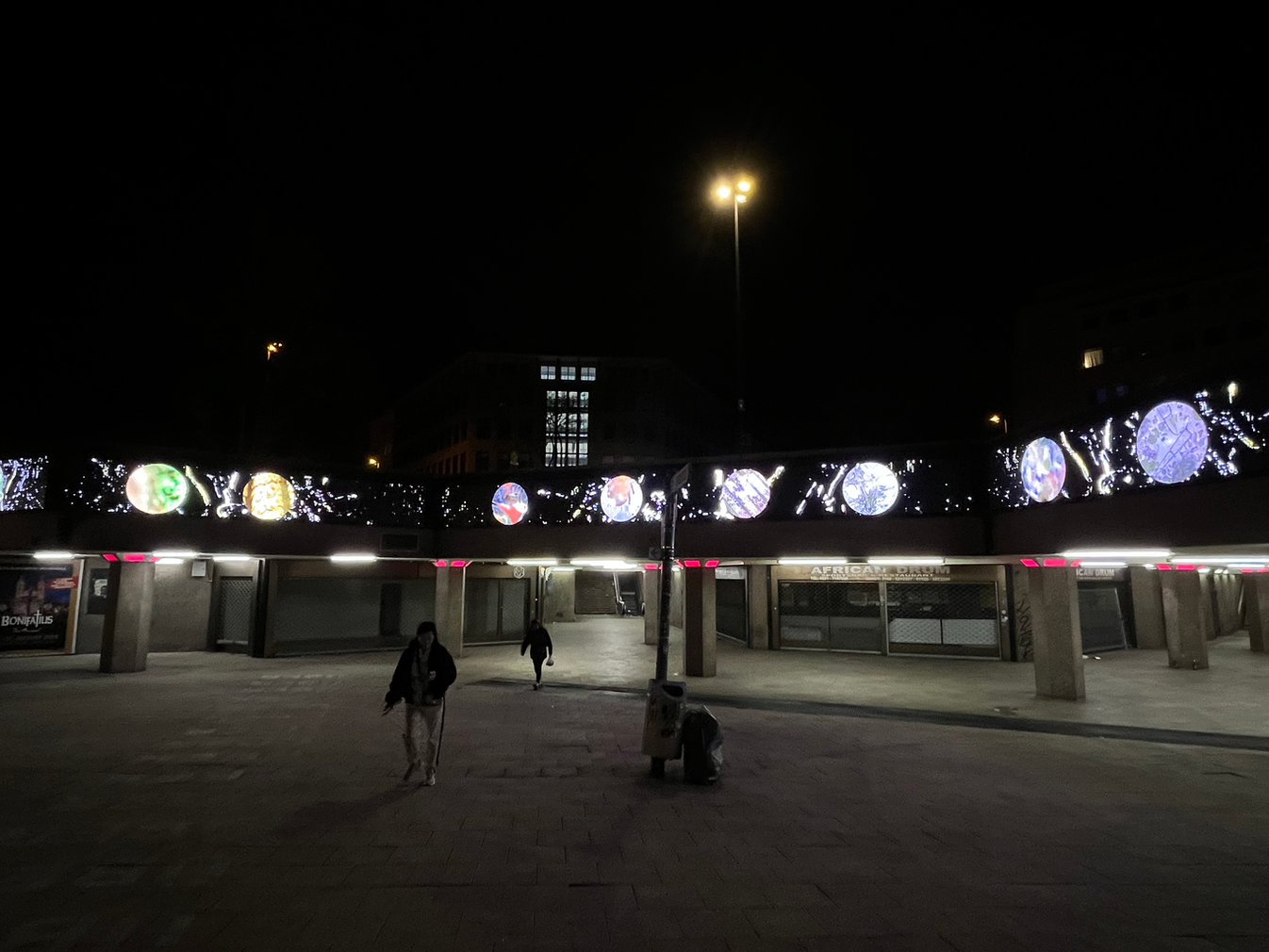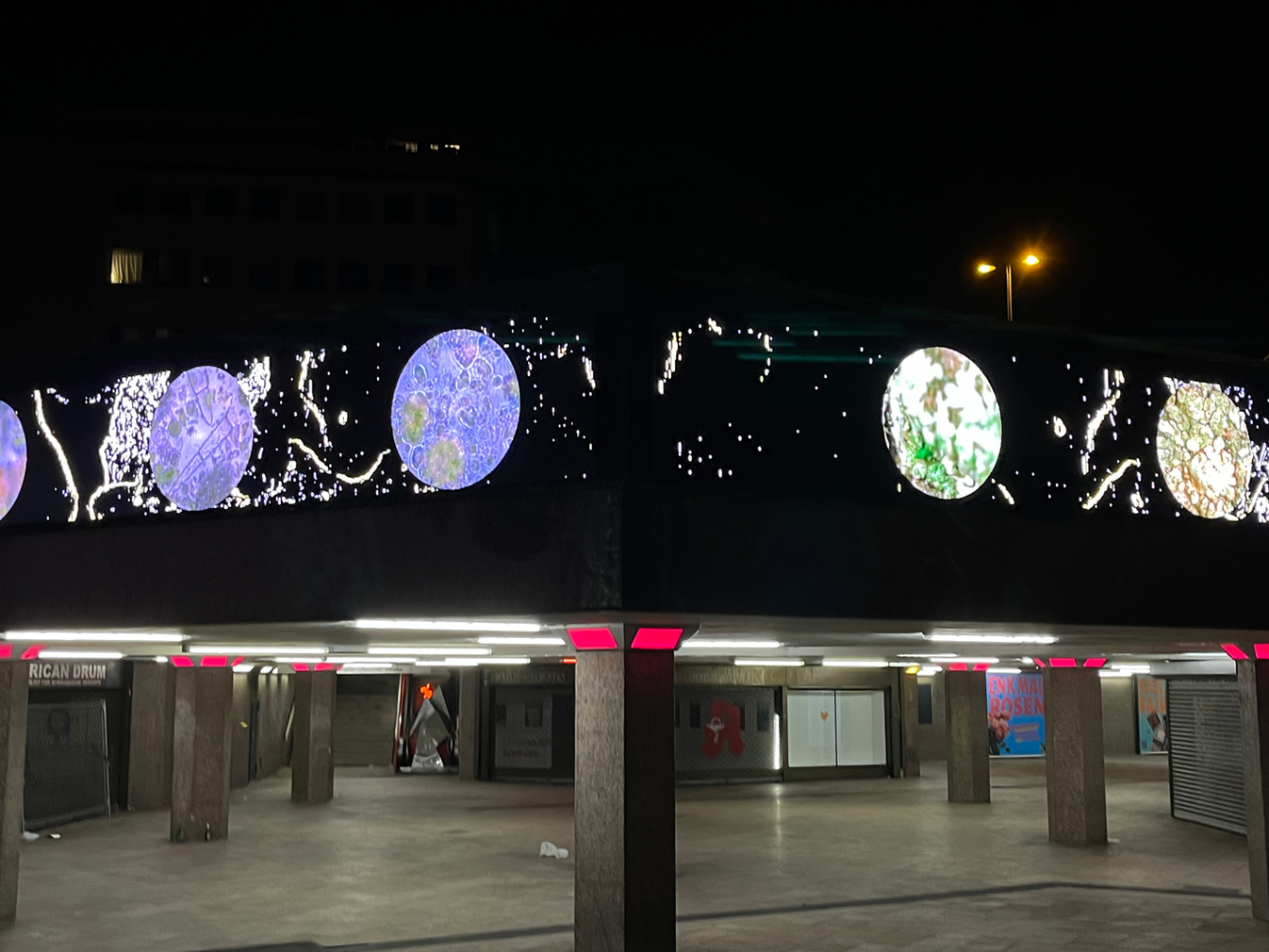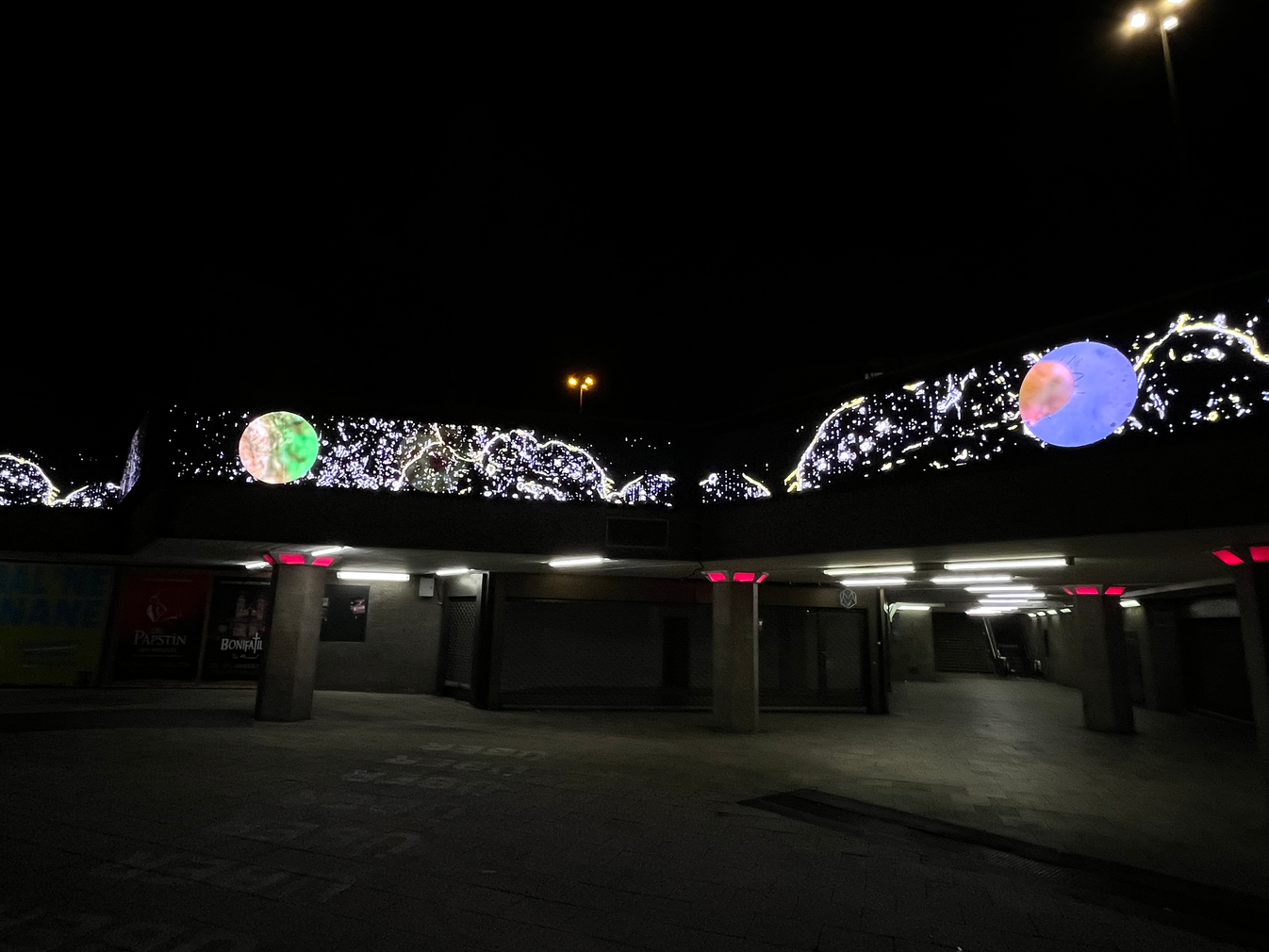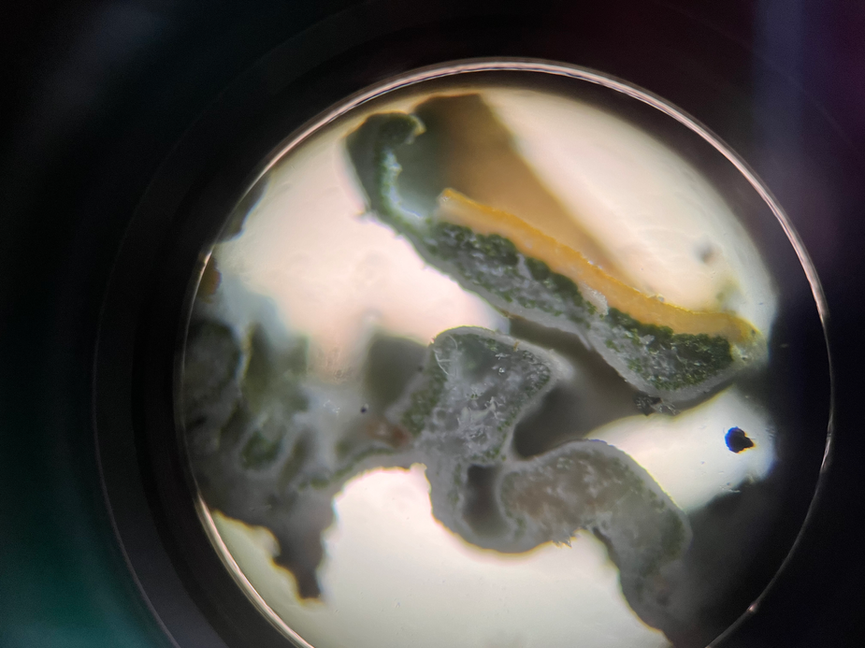Concrete Life
VIDEOINSTALLATION
10.2.-23.2.2024
Fries-TV, Ebertplatz
Köln
" Special thanks go to Ruben Bass, who was indispensable and influential not only in the recording of the video material, but also in the aesthetic realization of Concret Life. Thanks also to the scientist and artist Klaus Fritze for his expertise on lichens and mosses and for his helping hand. "
Concrete life investigates the hidden communities that inhabit the concrete of Ebertplatz. Lichens, mosses and microorganisms form a network of organisms that usually remain unnoticed by us. Samples of these micro-structures were examined under the microscope and translated into a collage of film material. The cement of our Ebertplatz is perforated and overgrown. The microscopic life on the concrete is revealed on a macroscopic scale.
MICRO TO MACRO
HIDDEN TO SEEN
The translation between invisible and visible dimensions of our environment is the primary element of the work „Concrete Life“.
By mediating between the microscopic and macroscopic scale, we can become aware of the significance and omnipresence of the microcosm.
Lichens and mosses fall into a category of the in-between. Although they are visible to the naked eye, they often go unnoticed or are dismissed. Moreover, it is the microscopic components within these communities that make them so extraordinarily resilient and essential for the climate. They are able to survive on the stubborn concrete of Ebertplatz, even in snow and sub-zero temperatures. Concrete Life is an installation that mediates between the invisible and visible scales of Life and uses the idea that we humans can only consider something to be of significance if we can see, feel and/or understand it.
LICHENS, MOSSES, MICRO-LIFE IN THE CITY - WHY?
How can we draw attention to efficient methods of greening urban infrastructures?
„Concrete Life“ deals with precisely that question.
While the installation primarily emphasizes the aesthetics and structuralism of lichens, mosses and microorganisms, it is also a thought experiment on what our cityscape could look like if we supported the growth of such plant communities on the surfaces of our city instead of suppressing it. But why are these organisms relevant in our present day and in the context of urban infrastructures?
Mosses and lichens are often confused, as they most likely occur in close proximity and even form communities. However, lichens are actually an individual species consisting of algae, fungi and sometimes cyanobacteria. This symbiotic interaction is what makes them so resilient and nutrient-rich, whereas mosses tend to be nutrient-poor.
Researchers at the Biodiversity and Climate Research Center (Max Planck Institute, Mainz) have calculated for the first time how essential these cryptogram layers (plants that reproduce without flowering) are for cleaning our air: Around 50 million tons of nitrogen are absorbed by lichens, mosses, ferns etc. every year. They also absorb and fix around 14 billion tons of carbon dioxide.
In addition, the traditional use of lichens and mosses in medicine should be noted. They can be processed into various substrates and used effectively against respiratory diseases, etc. Lichens in particular contain many valuable substances that have an antiviral and antibacterial effect.
The range of possible applications for lichens, mosses and cryptograms is broad. Wouldn't it make sense to cooperate with these organisms?
There are now a number of approaches to greening facades in cities to combat particulate matter, nitrogen oxides and heat. These concepts could be easily and efficiently implemented in public spaces such as Ebertplatz. Is it possible to rethink the concept of the city as its own biosphere, which must be protected and from which we ourselves can draw healing resources? (Essbare Stadt). Can we use the increasingly limited space of our cityscape ecologically and efficiently? And finally, can we succeed in bringing the concrete of our cities back to life?
Sources:
Flechten und Moose. 290 Arten schnell erkennen. Autor:innen: Volkmar Wirth, Ruprecht Düll, Steffen Caspari, Erscheinungsdatum: 19.10.2023
Informationsdienst Wissenschaft.de, gesehen am 9.2.24
transforming cities.de, gesehen am 9.2.24
essbare Stadt.Köln, gesehen am 9.2.24
Permakultur.de, gesehen am 9.2.24












